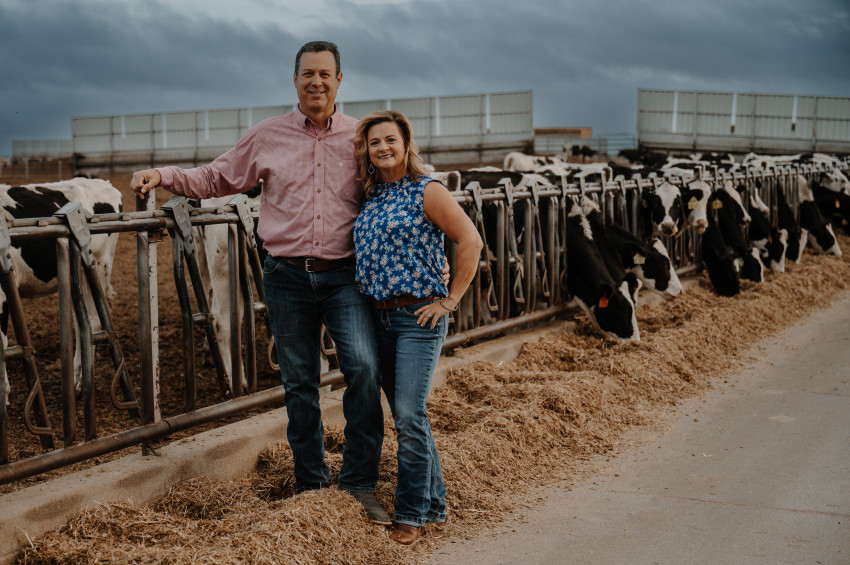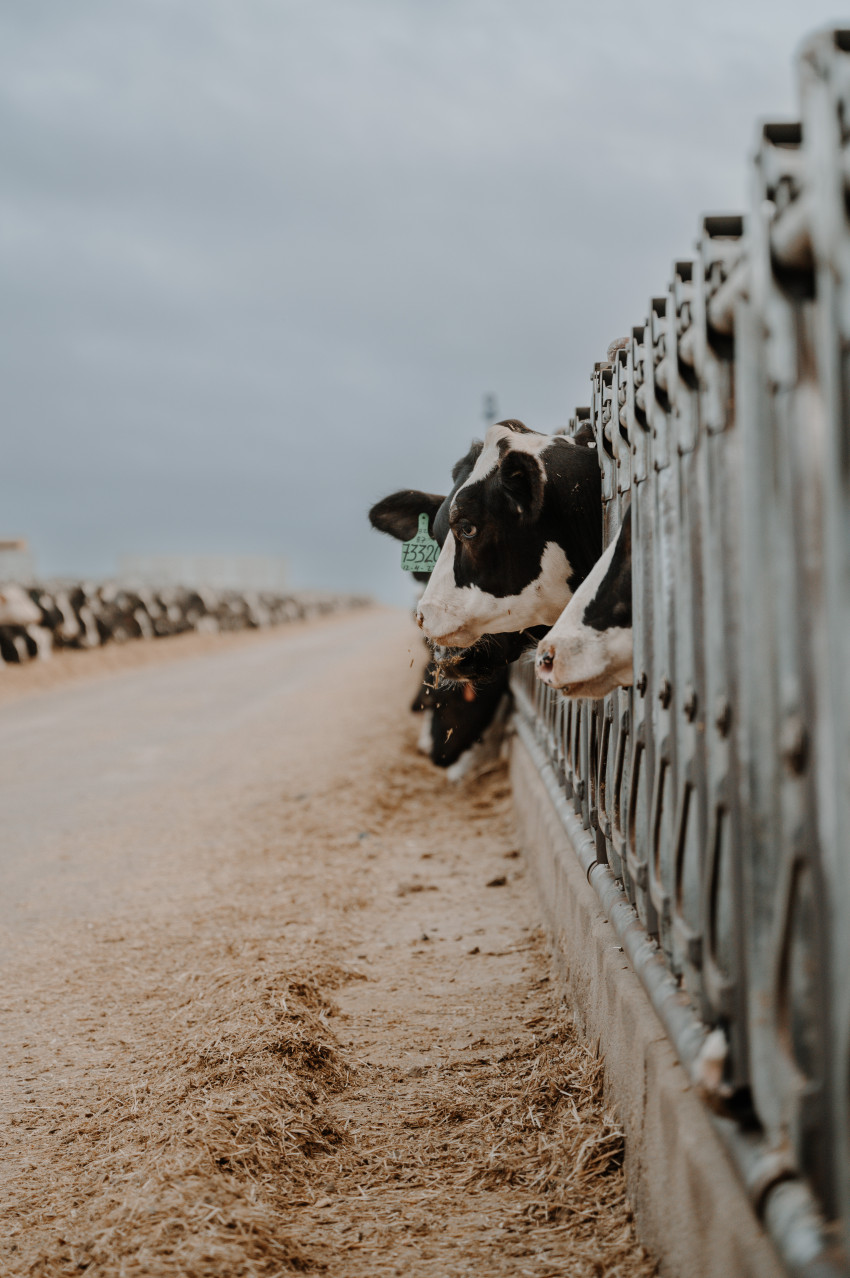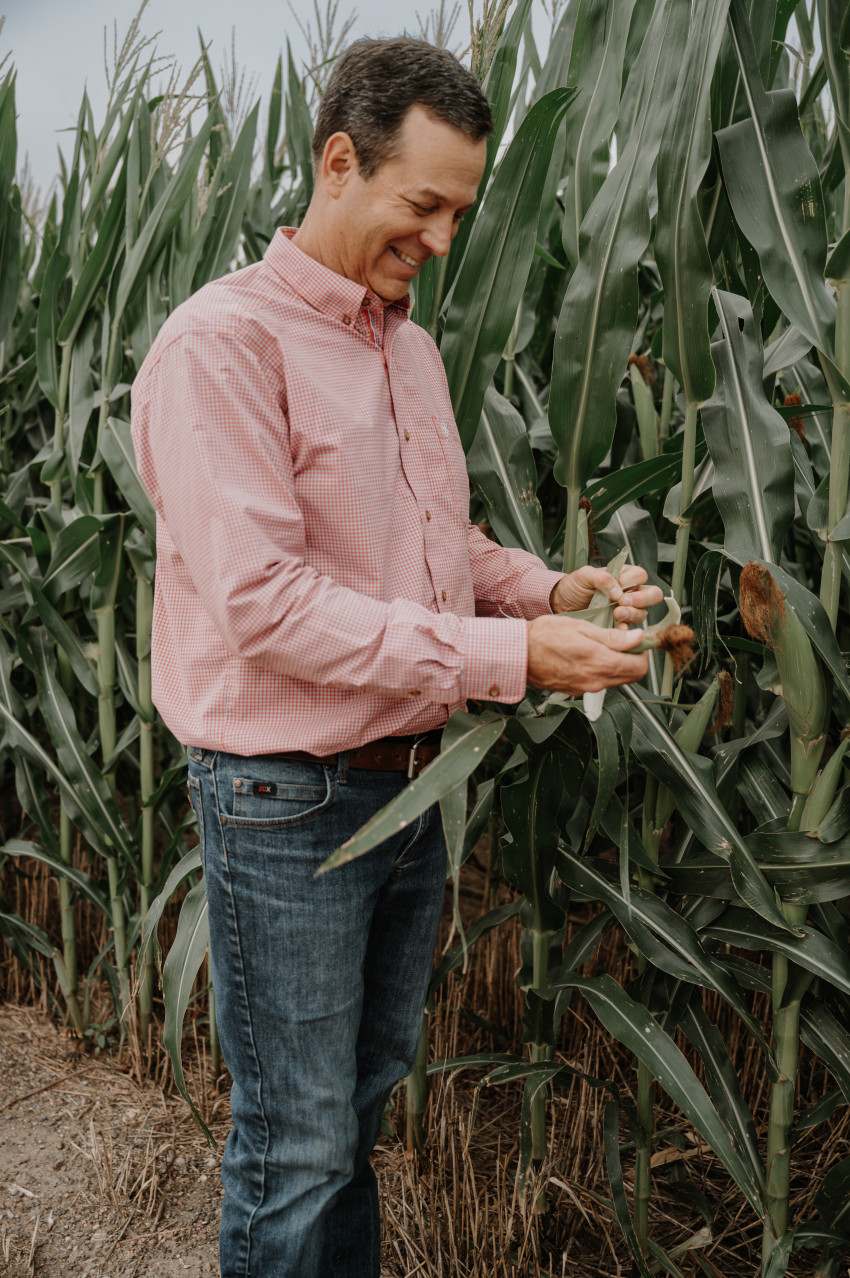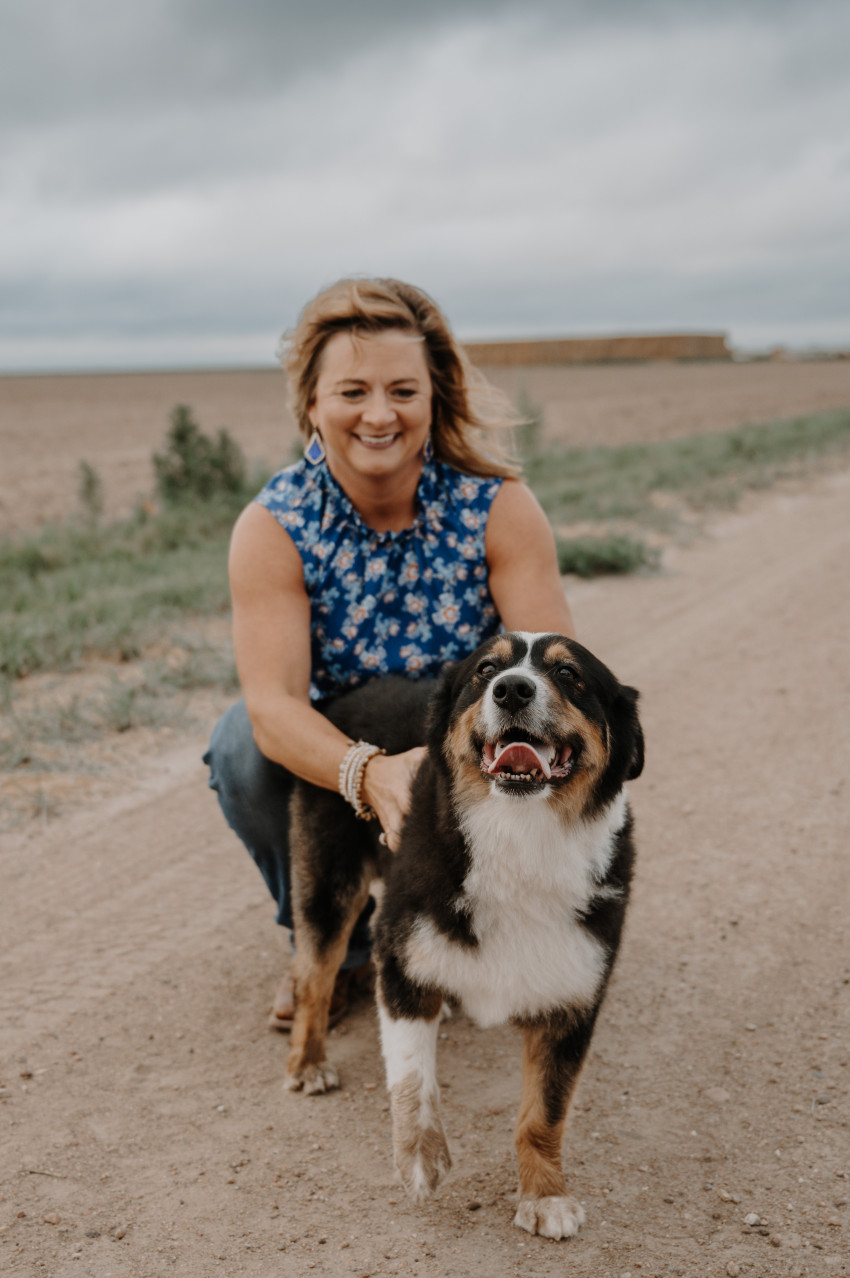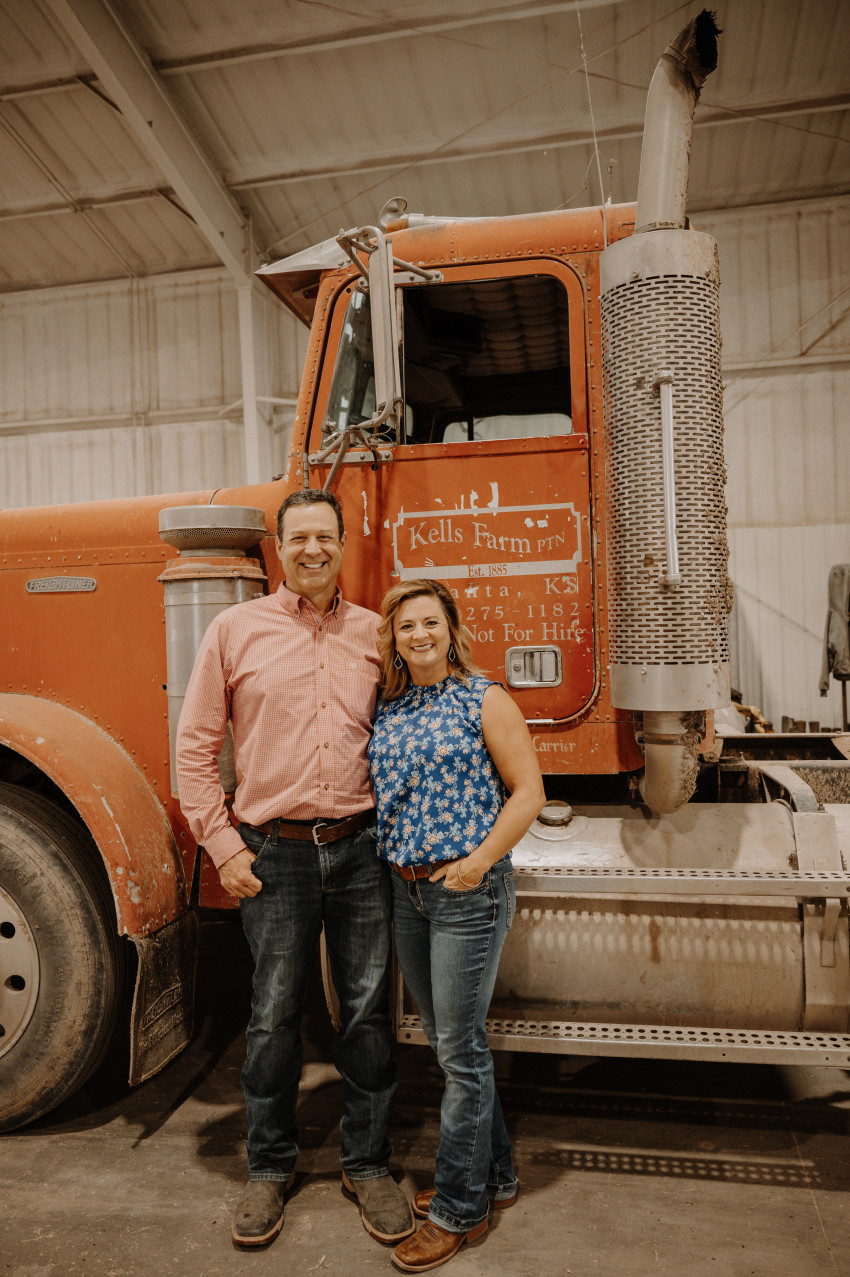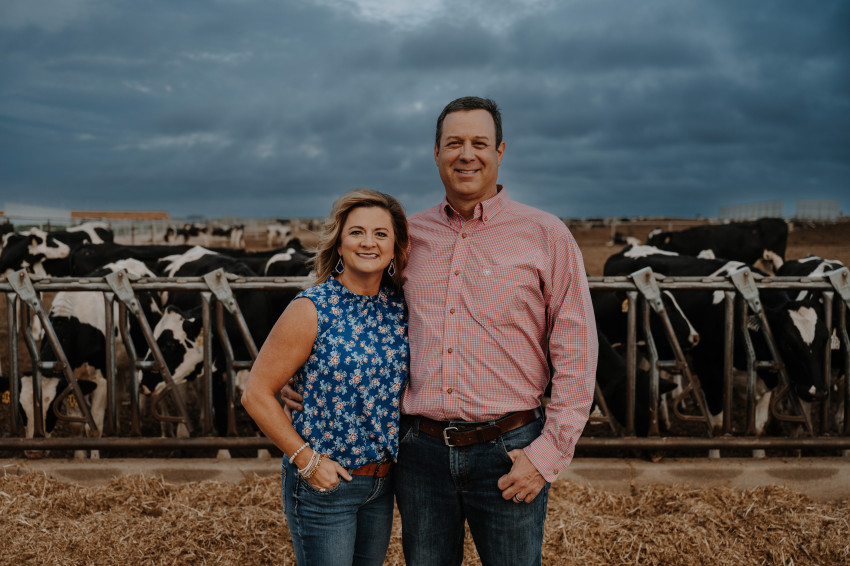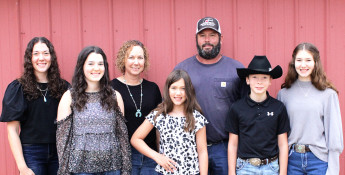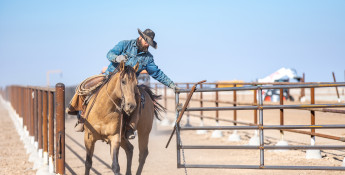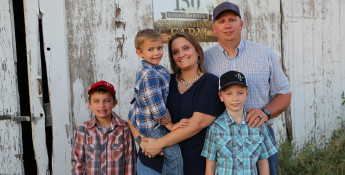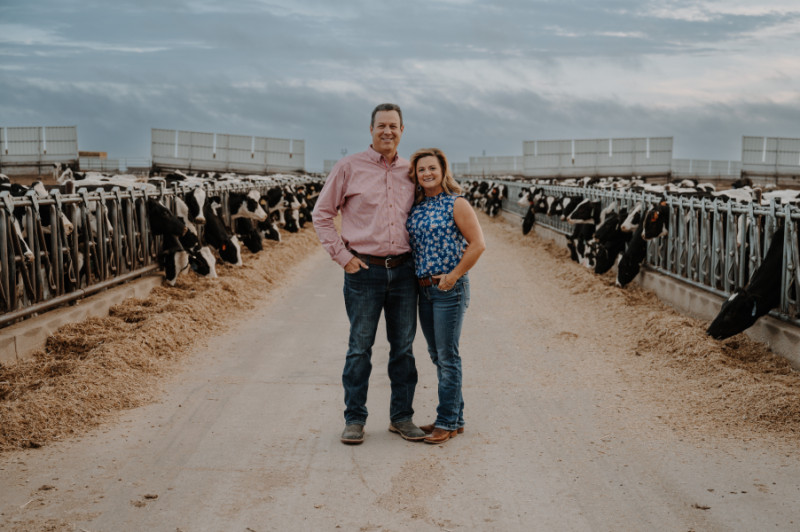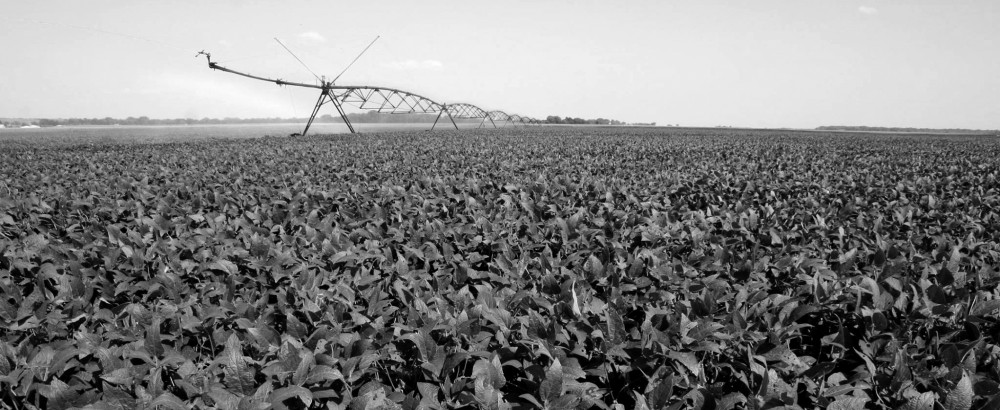By Kansas Living on February 3, 2025
Meet the Kells Ranch Family
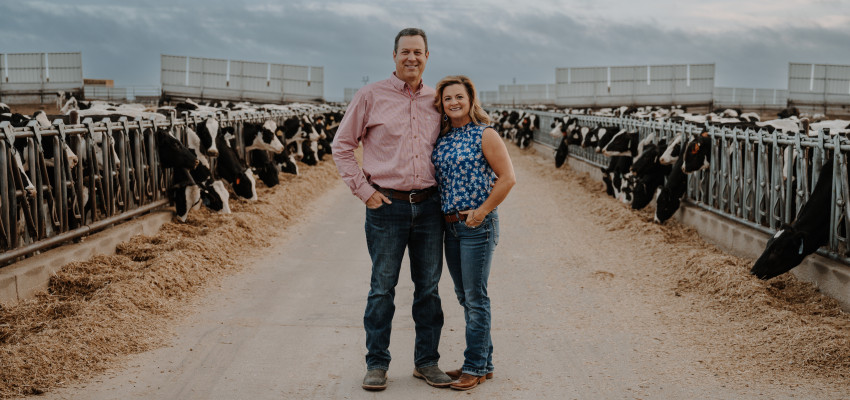
Nathan and Sarah Kells raise dairy replacement heifers and grows feed for their operation in Haskell County. Learn more about this family.
Nathan Kells
We are fifth-generation farmers in southwest Kansas on the ground my great-great grandfather first came to in 1885. We have evolved over time into a large, diversified agribusiness that focuses on raising replacement dairy heifers for customers from Wisconsin and Ohio to Florida and Georgia. Our farm produces about 60 percent of the feed we need, and we buy the rest from other local producers.
What does spring look like on your operation?
May and June are the busiest time of the year on the farm. Besides spring planting of corn and milo (sorghum), we typically start triticale silage harvest around the middle of May. There’s never a shortage of work in the spring for us.
What is the hardest and best part of your job as a farmer?
I would say the hardest part has been dealing with the weather uncertainties, including drought. We’ve suffered two droughts in my lifetime that took a dramatic toll on our farm and our psyches.
The best part of my job is enjoying the different aspects of the seasons as they come and go. Springtime always brings renewed hope for a better year.
What does sustainability mean to you?
Caring for the land as best we know how, and hopefully leaving it better than when we started. I heard a saying recently that I love: “It’s not our land, it’s just our turn.”
One thing we try to put into practice out here on the High Plains is protecting our soil from blowing with the extreme winds, such as leaving as much crop residue as we can after harvesting a crop. Things like corn stalks and husks are removed during harvest, and leaving that on the ground helps prevent soil erosion. We sometimes go in and plant a light cover crop such as triticale, turnips or radishes to prevent blowing on some of our limited irrigated ground.
How do you care for your animals?
Caring for our animals is our main job. Our customers trust us to provide excellent care to their animals while they are here. That includes specialists who scientifically balance diets, herdsmen who understand reproduction and employees who provide care and feed in a timely matter every day. Dairy heifers are unique animals, and everything we do is focused on growing them in the correct manner, breeding them on time and preparing them to return home ready to make healthy, safe milk.
What is one thing you wish consumers knew about your operation?
We value our employees as family and are proud to say that more than 75 percent of our workforce has been here for more than five years, and our management team for more than 10 years. We truly care about our employees.
What three things matter the most to you as a farmer and rancher?
Our people, our land and our water. We couldn’t survive without any one of those three.
Where do you see the future of your operation going?
We feel we are in a good spot scale-wise… we are just looking to continue improving our efficiencies in all aspects of the business.
What does a typical week/month look like for you?
Parts of our business, such as the heifer yard, are very repetitive on a week-to-week basis. We do the same thing every day, every week of the year. However, with the farm side, it is always changing as the seasons progress from planting to growing to harvesting.
What's one thing you've changed on your operation since you started?
Transitioning to growing replacement dairy heifers in 2000. Before we were your typical farm and beef livestock operation. Now, growing dairy heifers is our focus.
What's a question you have for grocery buyers?
This is more of an encouragement for consumers. If you’ve never set foot on a farm, don’t be afraid to reach out to a farmer or rancher and request a visit. The best way to understand what we do is to come out and see for yourself.

